I've looked at clouds from both sides now
From up and down and still somehow
It's cloud illusions I recall
I really don't know clouds at all….
- Joni Mitchell
Before jumping into this week’s post, I want to share a little background. I begin writing my essays a week ahead of time. I’m neither fast nor prolific so my process is to write, think, rewrite, step away, edit, etc. This week you might see some commonality between my post and the 2/18 post from Rob Moir at Clam Chowdah Narratives. I’ll admit to a little panic when I saw Rob’s terrific conversation about – clouds! Apparently, we were both struck by the same recently published scientific research. I reached out to Rob, and he graciously told me that it was fine to continue with my reflection on the same theme. If you read them both, you’ll see that we start from similar places and then head in different directions. I hope that you will follow Rob at Clam Chowdah Narratives and read his latest post for a beautifully written and more scientifically based take than I am able to offer.1 With that said, off we go into the clouds.
****
For the past week, clouds have been floating around in my thoughts. A theme for this week’s post idles in my journal while I consider clouds. Or more specifically, I consider what life might be like with fewer of them. I’m neither a scientist nor a climatologist, but since my encounter years ago with “An Inconvenient Truth” and the training to present Al Gore’s slideshow, I’ve been a steady follower of publications on climate chaos and biodiversity loss. I’ve followed the upward trend of carbon dioxide emissions and temperatures and the too-rapid decline of species -- and allowed my heart to break in the process. Each loss feels personal, a reminder that no matter how important it is that we live more gently on this Earth, we are still so far from slowing, let alone stopping, the clear-cutting of great swaths of old growth forest, the damming of mighty rivers, the plowing of fertile prairie, the fracking and pumping of oil and gas, the poisoning of Luna moths, Monarchs, and owls….
But I never thought we might lose clouds.
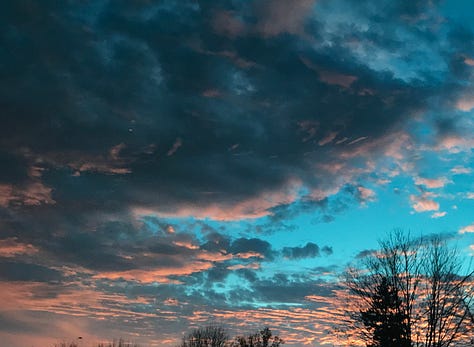
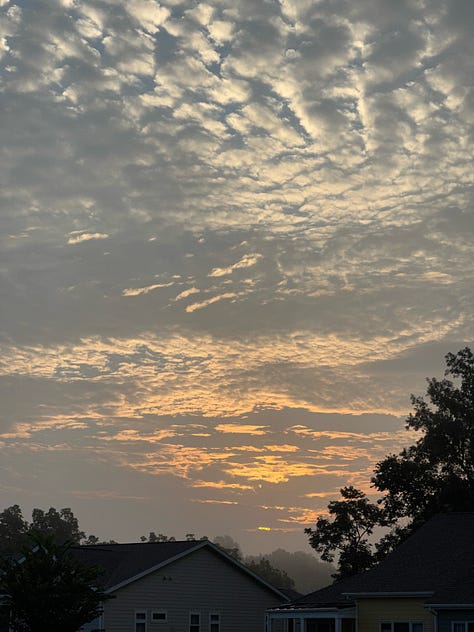
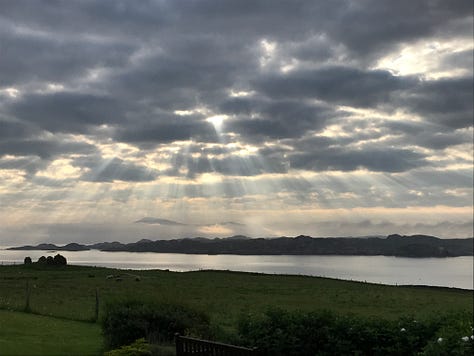
Global temperatures have surged with “both 2023 and 2024 reaching about 1.5 degrees Celsius above the preindustrial average.” We know many of the reasons for climbing temperature, but those factors, scientists say, are not sufficient to explain the world’s recent record-breaking heat. Two new studies offer an additional explanation: we now have fewer clouds. NASA has found “that some of Earth’s cloudiest zones have been shrinking over the past two decades. “And the decline in cloud cover, researchers say, signal the start of a feedback loop that leads to more warming.” Even small changes in clouds could result in a big change in the warming of Earth.2
On one hand, this may seem like just one more potential positive feedback loop with an enormously negative impact, much like Atlantic Meridional Overturning Circulation (AMOC), which could potentially collapse because of the input of fresh water in the North Atlantic. Or the melting sea ice that exposes more dark ocean which in turn absorbs more heat and causes more ice to melt. Clearly each of these is worrisome for life on Earth. (You might want to pause here to read Rob’s take on these two points.)
But the discovery of fewer clouds feels like more than another scientific revelation. Perhaps because I’ve been a cloud watcher all my life, news of declining cloud cover prompts a visceral reaction in me. I am recalled to summer days, lying in the grass watching fluffy white elephants and butterflies shaping and reshaping themselves eliciting stories to fill my imagination. As the sun peaked, I longed for passing clouds to shade me from the blazing Kansas sun. I recall the feel and smell when clouds summoned showers to drench and cool the parched and cracking earth.
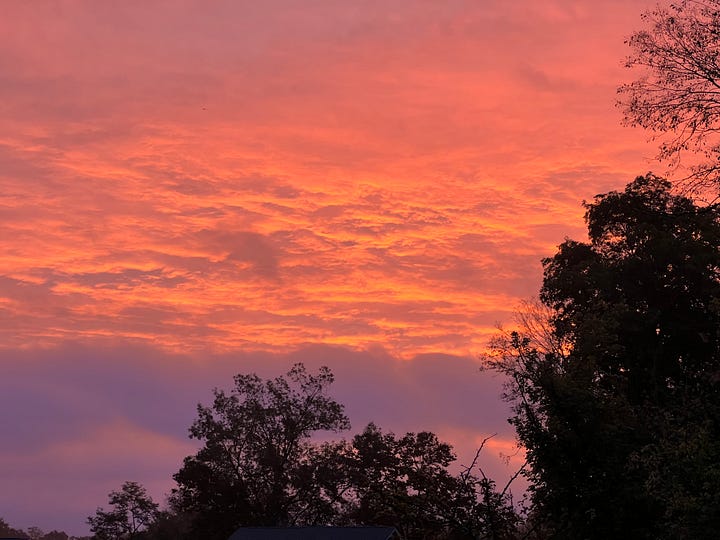
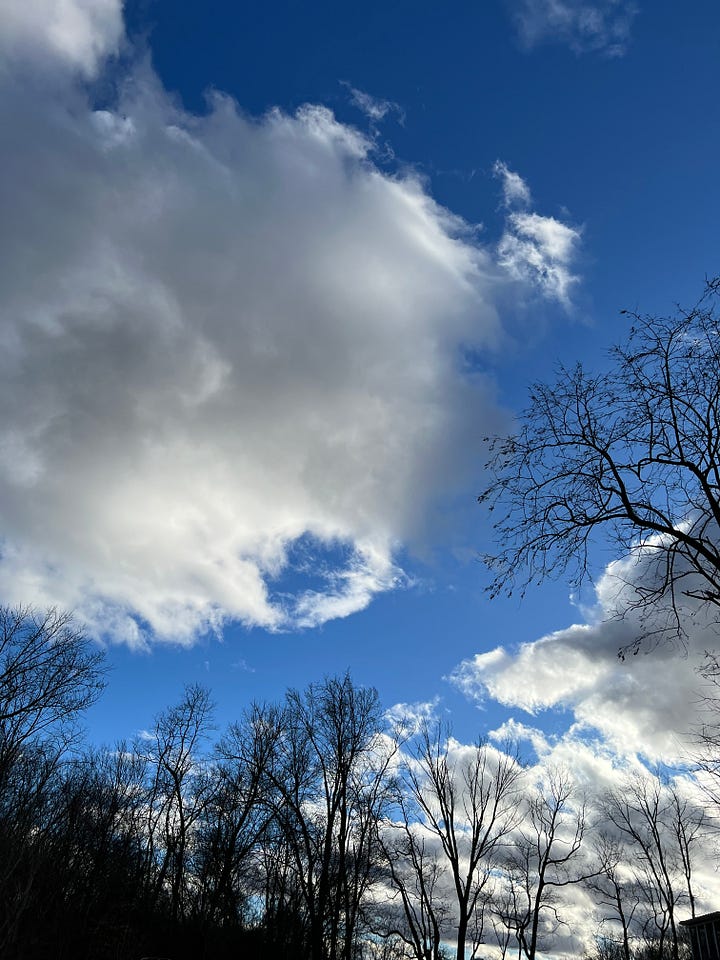
Perhaps only a poet can begin to adequately describe clouds.
****
I bring fresh showers for the thirsting flowers,
From the seas and the streams;
I bear light shade for the leaves when laid
In their noonday dreams.
From my wings are shaken the dews that waken
The sweet buds every one,
When rocked to rest on their mother's breast,
As she dances about the sun.
I wield the flail of the lashing hail
And whiten the green plains under,
And then again I dissolve it in rain,
And laugh as I pass in thunder.
- Percy Bysshe Shelley
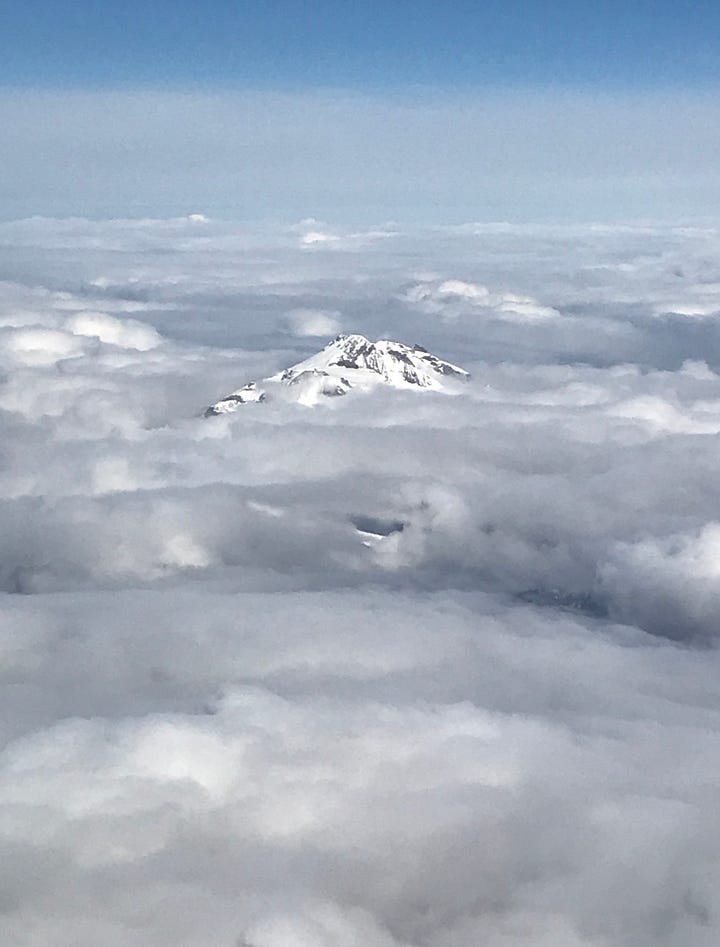
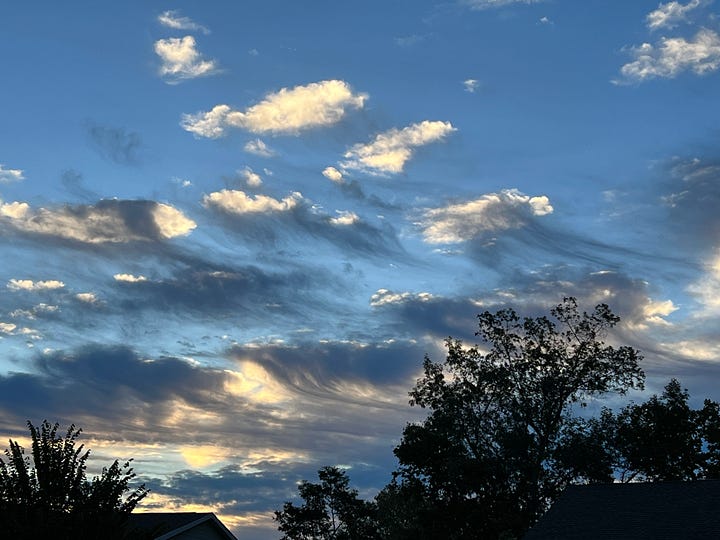
It was not all butterflies, friendly animals, and delightful splashes of cooling water, of course. Clouds could be a harbinger of danger. I wrote about this in Earth & Soul.
“Without meteorologists to monitor and report on impending weather in our sparsely populated area of central Kansas in the 1950’s, we became our own forecasters. On summer afternoons when all grew intensely hot and muggy and storm clouds began to build, I stood outdoors next to Dad, watching the clouds roiling purple and gray, our senses tuned for the birth of tornadoes. With my mom and baby brother safely ensconced in the cellar surrounded by a summer bounty of canned goods and freshly dug potatoes, I felt grown up, wise, and safe as I waited with Dad to take instruction from the sky.
I can’t adequately describe a Kansas sky. It is big. It’s easy to maneuver around the few trees so that with only a tiny effort you can see forever. In a storm, the clouds build to enormous cumulonimbus; white is overcome by grey and blue-black as competing hot and cold fronts – often clearly defined with sharp edges – maneuver to engage. At the age of seven, I have learned that when the air becomes deadly still and you feel the weight of it, when the color of the clouds turn muddy yellow, I too will be required to make my way to the cellar. When Dad comes down the concrete steps and pulls the slanted door closed and locks it behind him, the sky is deadly serious. It’s not the rain or blowing wind that harkens trouble; we know that destruction comes out of silence the color of an aged bruise.
You might think that I learned a lot of facts about weather at my father’s side, but it wasn’t like that. It was a full-on sensory experience; smell, feel, sound and images – made sharp by potential danger - wove themselves into a deep connection with the wind and sky.”3
Who will we be when clouds no longer speak to us? When cloud cover shrinks, what is lost in beauty, majesty, wonder, and story? We have over-reached our meager human knowledge and struck at the core of Earth systems. I am reminded of paleontologist Peter Ward’s chilling book in which he describes in previous times of great extinction, the oceans belched poisonous gas and the sky was always green and slightly hazy.4A green sky seems unimaginable and terrifying. Declining cloud cover should break our hearts, call us to our knees, and demand our humility and resolve.
*****
My somatics teacher of years ago encouraged us to begin every practice with a statement: “I am a commitment to….” Not “I am committed to….” The latter puts the commitment outside of us, distances us, others us. “I am a commitment to….” requires that we embody our calling. It is the way we move in the world. It is who we are. With such clear resolve we are a living testament to what matters. This the work we are called to do despite difficulty because this gift we are to the world is deeply woven within us – heart, soul, mind, body.
I am a commitment to kinship. I will hold myself one with people, plants, animals, Earth – honoring the sacred web of life, loving and protecting as best I can. My action must flow from this.
To tell you this is scary. There are so many ways to fall short of commitments. It’s tempting to downsize my commitment to something more realistic. Yet surely in these times with so much at stake, each of us is summoned to commit to more than seems possible, trusting that forces beyond our knowing will weave our collective offerings into gifts for a future beyond our imagination and lifetime.
I ground myself and center down. “I am a commitment to kinship,” I say to the clouds. I will bear witness to your beauty, offer gratitude for the gifts you offer, and honor your power. I will live in ways that do not diminish your life.
****
I am the daughter of Earth and Water,
And the nursling of the Sky;
I pass through the pores of the ocean and shores;
I change, but I cannot die.
For after the rain when with never a stain
The pavilion of Heaven is bare,
And the winds and sunbeams with their convex gleams
Build up the blue dome of air,
I silently laugh at my own cenotaph,
And out of the caverns of rain,
Like a child from the womb, like a ghost from the tomb,
I arise and unbuild it again.
- Percy Bysshe Shelley
In-Person Retreat Offerings — I hope you’ll join me for an extended time to connect to Earth and center down.
Discovering the Spiritual Wisdom of Trees: Collaboration and Communication. March 22, 2025, 10am to 4pm, at Well for the Journey, Lutherville-Timonium, MD. Leader: Leah Rampy. Information and registration
Discovering the Spiritual Wisdom of Trees. March 28 - 30, 2025, Prairiewoods Retreat Center, Hiawatha, IA. Leader: Leah Rampy. Information and registration.
Singing the Trees: Reweaving Connections in Edge Times. April 11-13, 2025, Wellspring Retreat Center, Germantown, MD. Leaders: David and Leah Rampy; Lindsay McLaughlin. Registration and Information
Shannon Osaka. Scientists have a new explanation for the last two years of record heat. Washington Post. Feb 24, 2025.
Leah Rampy. Earth & Soul: Reconnecting amid Climate Chaos. Chevy Chase, MD: Bold Story Press, 2024.
Peter D. Ward. Under a Green Sky. New York: First Smithsonian Books, 2007.


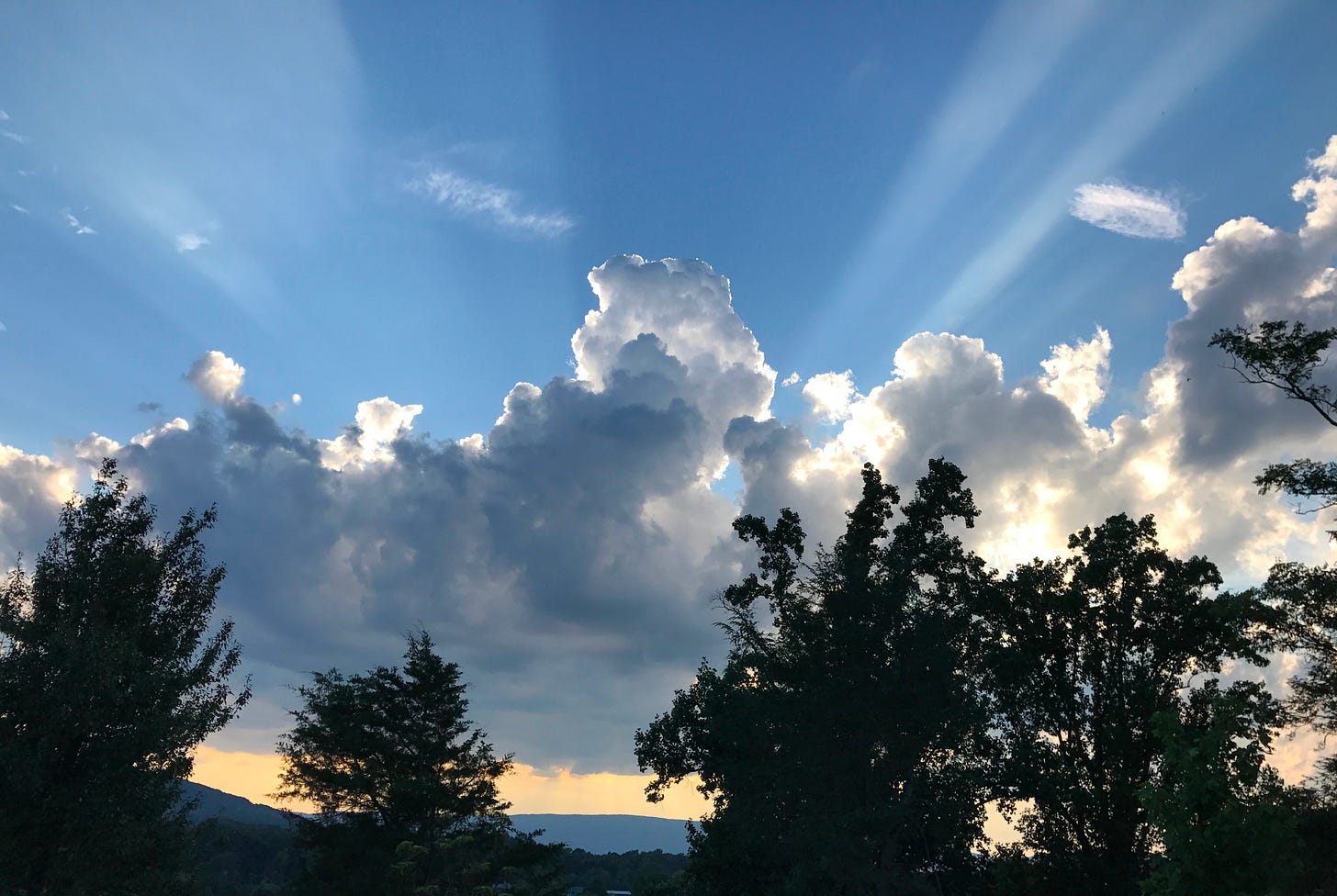
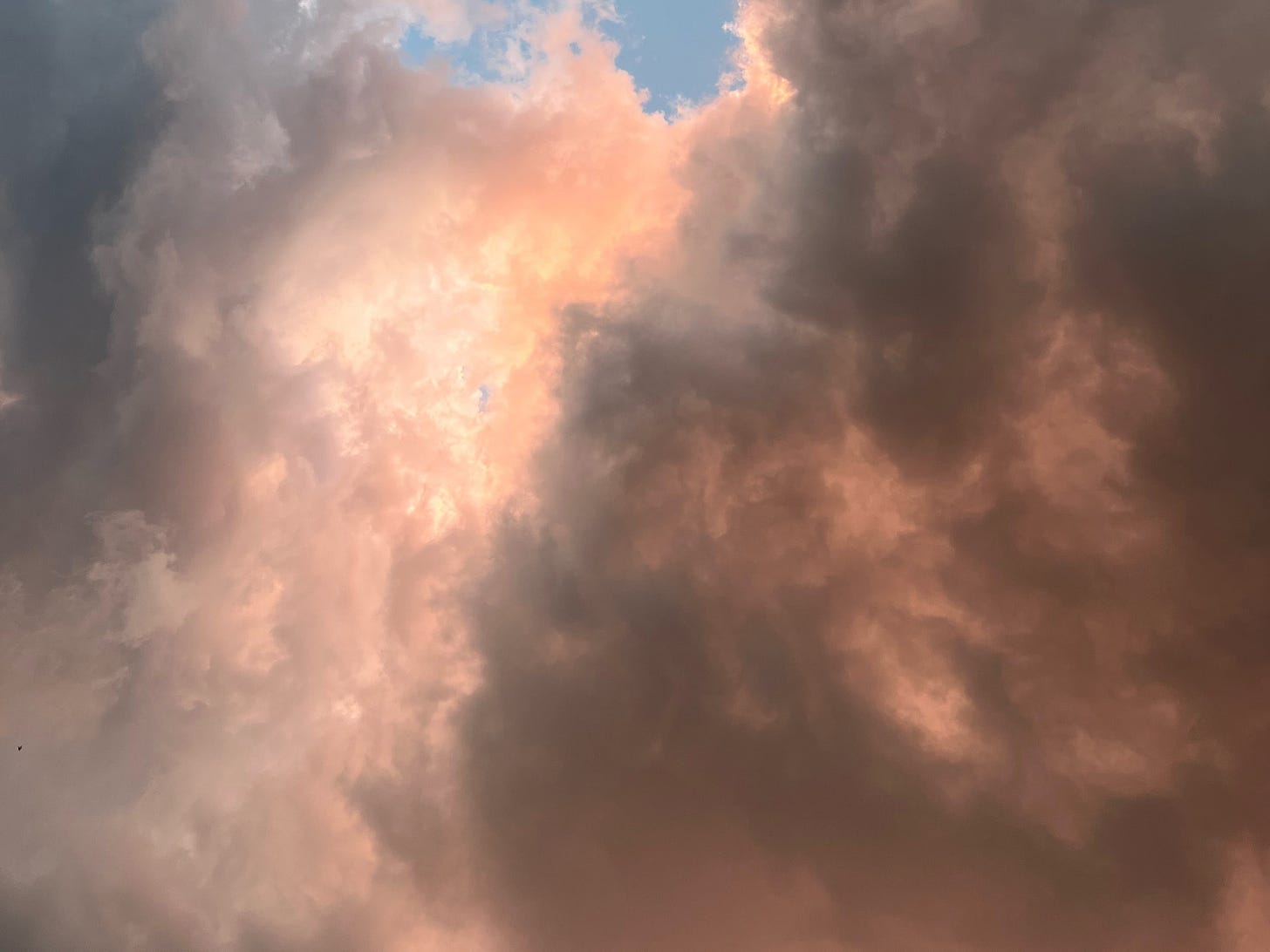
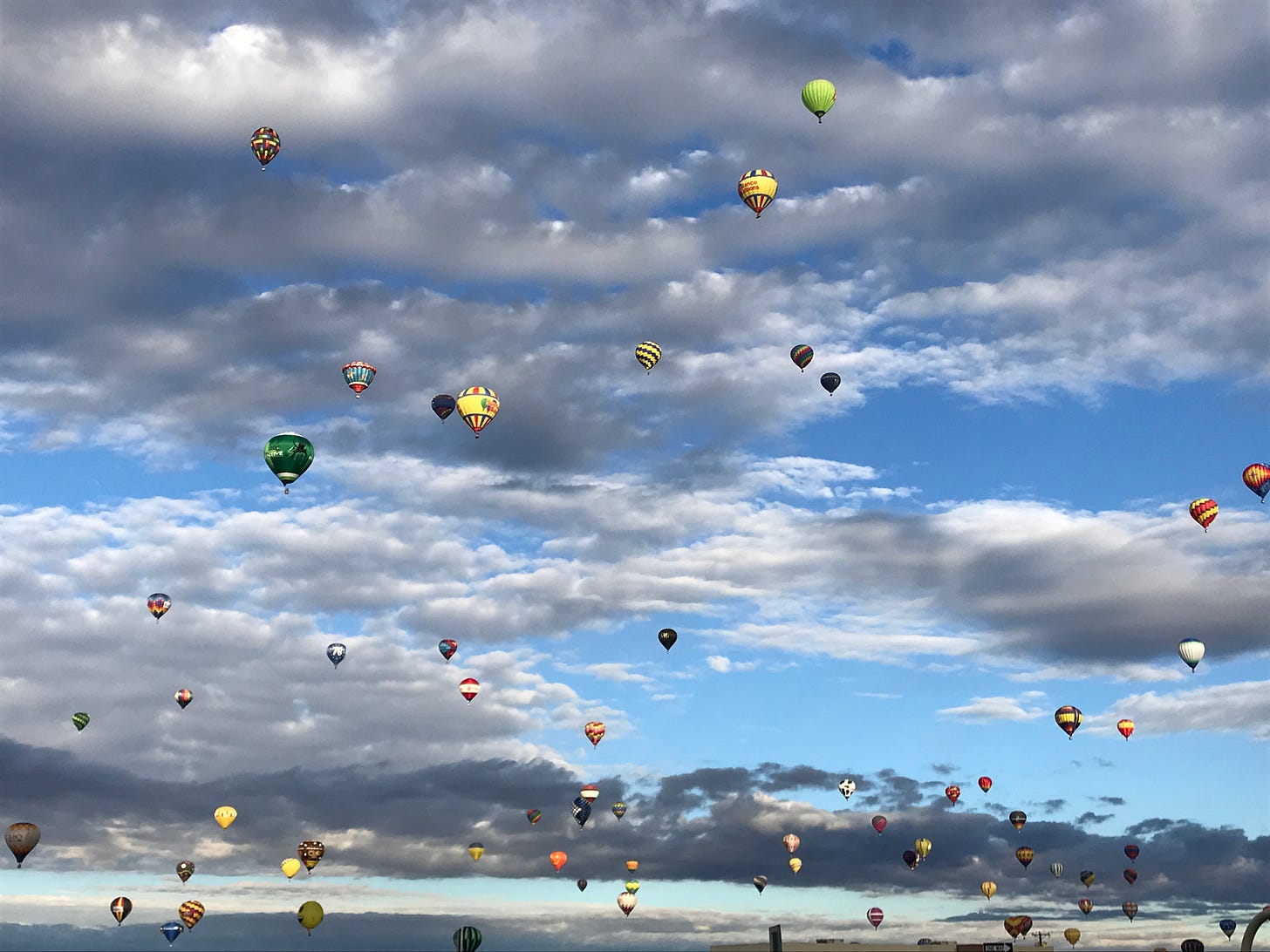

Beautiful, terrifying, heartbreaking.
Thank you Leah, for once again sharing truth and offering wise reflection. I am very taken with your statement, "I am a commitment to kinship." Yes, my truth, but one I have not said that way before. And losing clouds feels awful. I am drawn to them, although I am not sure I have ever called them kin. From now on I will. Even today's gray sky here is kin. Thank you.